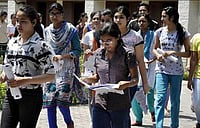Dr BS Murthy, Project Director, System of Air Quality and Weather Forecasting And Research (SAFAR), which provides a dedicated air quality information service under the Ministry of Earth Science, is of the view that bursting of crackers indeed enhanced the existing pollution (PM2.5) level. As per SAFAR's estimate, bursting crackers can lead to a 700 microgram meter cube spike in PM2.5 pollution in seven hours. That means from 7 pm on November 4 to 2 am on November 5, ie on the night of Diwali, the pollution level peaked at about 1000 microgram m-3.
Dr BS Murthy, Project Director, System of Air Quality and Weather Forecasting And Research (SAFAR), which provides a dedicated air quality information service under the Ministry of Earth Science, is of the view that bursting of crackers indeed enhanced the existing pollution (PM2.5) level. As per SAFAR's estimate, bursting crackers can lead to a 700 microgram meter cube spike in PM2.5 pollution in seven hours. That means from 7 pm on November 4 to 2 am on November 5, ie on the night of Diwali, the pollution level peaked at about 1000 microgram m-3.



















.jpg?w=200&auto=format%2Ccompress&fit=max)

_550_550.jpg?w=200&auto=format%2Ccompress&fit=max)



